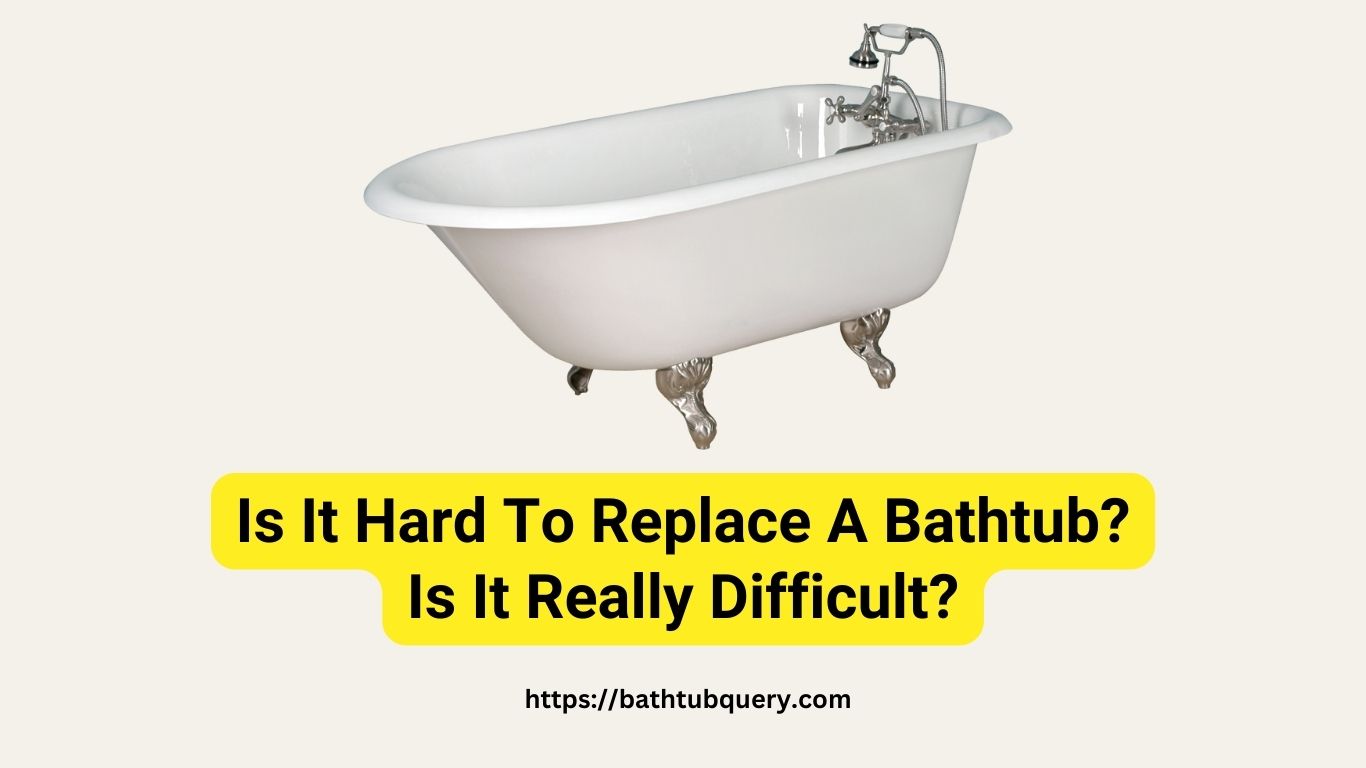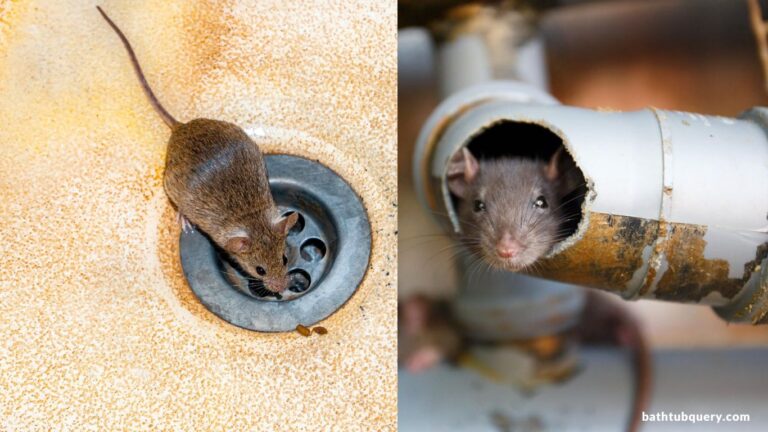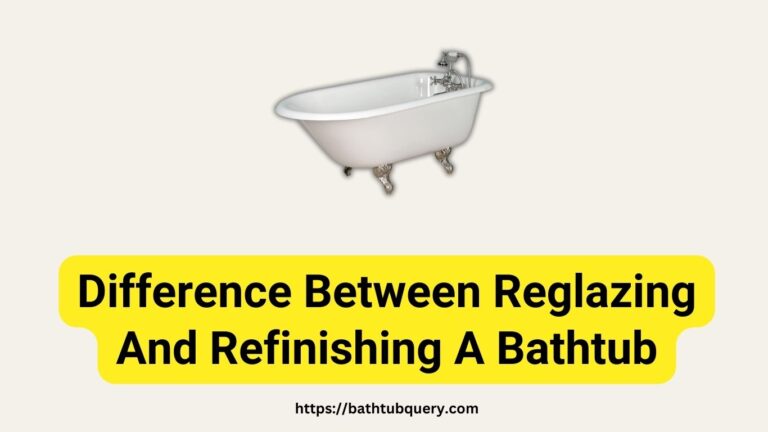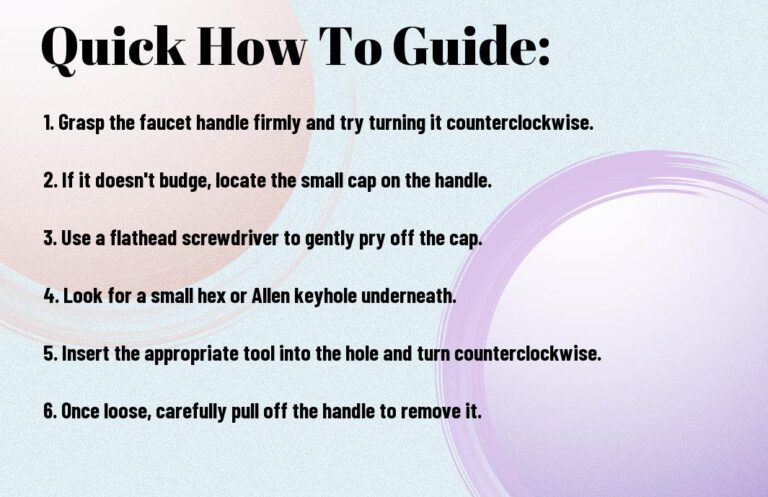Is It Hard To Replace A Bathtub?
Replacing a bathtub is a major decision for any homeowner. The query “Is it hard to replace a bathtub?” regularly arises. Your DIY skill, the layout of your bathroom, the style of bathtub you are installing, and other considerations all play a role in determining the answer to this question.
In this article, we’ll plunge into these elements and explain why each can influence the level of difficulty involved in replacing a bathtub.
Is it Hard to Replace a Bathtub?
Yes, replacing a bathtub can indeed be a challenging task. This project often involves considerable work, such as potential damage to wall tiles during removal, and may become more complex if the old tub isn’t easily accessible. If walls must be opened to facilitate the process, it only amplifies the difficulty. In essence, it’s a substantial undertaking, even for seasoned DIY enthusiasts.
Let’s discuss some primary reasons that can make this task more challenging:
Limited DIY Knowledge:
If you’re a DIY enthusiast with limited experience, you might find bathtub replacement a bit of a challenge. It involves various skills such as plumbing, tiling, and sometimes even electrical work.
Complex Bathroom Layout:
Bathrooms come in all shapes and sizes. Some may be small and cramped, while others might have an intricate layout. Such situations can complicate the bathtub replacement process.
Bathtub Type:
The type of bathtub you choose to install also plays a significant role. Freestanding tubs are usually easier to install compared to built-in ones, which require more time and effort.
Availability of Tools and Equipment:
Without the right tools, you’re setting yourself up for a difficult task. Bathtub replacement requires specific plumbing tools, which might not be readily available in a typical home toolbox.
Bathtub Replacement Process
If you’re considering a DIY bathtub replacement, it’s crucial to understand the process. Here’s a general rundown of the steps involved:
Getting Rid of the Outdated Tub
The first order of business is to disconnect and remove the old bathtub, which may be a major pain. This is not a task for amateurs because it typically involves working with water and electricity. If your present tub has extras like jets or a heater, you may want to consider upgrading.
Make sure the water is turned off before you jump in. Then, you need to remove the tub and its accompanying plumbing. You will need a sharp eye and a steady hand to remove the drain and the fittings from the faucet. This usually calls for a powerful wrench and a lot of hard work on your part.
In the case of a built-in tub, you may have to remove some tile or other finishings to have complete access to the fixture. There will be some mess and dust, but it will be well worth it in the end. Once the plumbing is severed, the tub can be removed, but two people may be needed because of its weight. Never put your safety at risk.
Getting Ready for the New Tub
After the old tub has been removed, you may begin preparing the new one. The phase of preparation is analogous to preparing a canvas for a painting. Putting in the drain and faucet is a crucial step in installing a new bathtub.
To begin, install the drain and overflow according to the manufacturer’s instructions. This is not a contest, so please keep that in mind. Make sure everything fits snugly and is well sealed by taking your time. Everyone wants to avoid the hassle of fixing leaks caused by a poorly installed drain.
Then, you might need to put in the faucet, depending on how your tub is designed. Always make sure you are checking your work against the manufacturer’s guidelines. A well prepared tub will facilitate an effortless installation.
Putting in a New Bathtub
The time has arrived to put in your new bathtub. You have cleaned out the bathroom, bought new fixtures, and are ready to install them.
Make sure the new tub is aligned correctly with the plumbing as you move it into place. Make use of a spirit level to ensure that your tub is absolutely horizontal, as a horizontal tub is a happy tub. Keep the tub level by shimming it if required.
Once you have your bathtub in its new home, you may reconnect the water lines. Make sure the drain is attached tightly and will not leak. Then, tighten any connections between the water supply and the faucet.
To finish off the look of your new built-in tub, you may choose to tile the surrounding area of your bathroom. While tiling may be a task unto itself, the finished product will be worth the effort.
Finally, take stock of your accomplishment and bask in the glow of a job well done. After all, relaxing in a tub that you put in yourself is unlike any other experience.
Remember, this is a broad overview. The actual process can be much more intricate depending on the type of bathtub and your bathroom layout.
Is Professional Help Necessary?
Not everyone should attempt to replace their bathtub on their own, although it is possible. If there is anything you do not feel confident doing, it is best to bring in an expert. They bring knowledge and experience that can make replacing a tub quick and easy. DIY tasks can be stressful and dangerous, but by hiring specialists, you can avoid both.
Frequently Asked Questions
How long does it take to replace a bathtub?
The process typically takes 1-2 days for professionals. DIY enthusiasts might need more time depending on their experience and the complexity of the project.
What are the risks associated with DIY bathtub replacement?
Possible risks include potential damage to plumbing, incorrect installation leading to leaks, and even personal injury if the proper safety measures aren’t followed.
Can I replace my bathtub with a shower?
Yes, replacing a bathtub with a shower is a common renovation. But, it involves plumbing changes and might require professional assistance.
Do I need a permit to replace my bathtub?
It varies by location. Some cities require permits for significant plumbing changes. Always check with local authorities before beginning a project.
Is replacing a bathtub expensive?
The cost of replacing a bathtub can vary widely based on factors such as the type of tub, labor costs, and whether additional renovations are needed.
Key Takeaways
- Bathtub replacement difficulty depends on your DIY skills, bathroom layout, and the type of bathtub.
- Proper tools and equipment are essential for a successful bathtub replacement.
- Although a DIY project, professional help might be necessary if the task seems too challenging.
Related articles:
- How Long Does It Take to Remove and Replace a Bathtub?
- Is It Cheaper To Have A Bathtub Or A Shower?
- What Material is Better for a Bathtub? Choosing the Ideal Bathtub Material

Amanda has been designing and installing bathtubs for over 15 years. She first got interested in the bathtub industry while working as an interior designer right after college. During her years as a designer, Amanda was frustrated by the lack of high-quality, unique bathtub options for her clients. This passion led her to start her own bathtub website in 2009.







